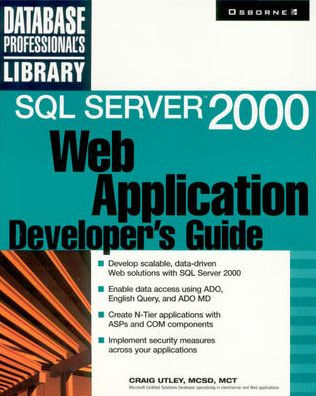Read an Excerpt
Chapter 1: Introduction to Web Applications
This book will examine how to build Web applications using Microsoft's SQL Server 2000 as a back-end. First, we need to embark on a journey to understand what we mean by "Web application," and how we can use Microsoft technology to build Web applications. We will examine such topics as HTML, IIS, ASP, and n-tier development in this introductory chapter. This chapter assumes you are familiar with HTML; if not, you can refer to Appendix E.
What Are Web Applications?
Web applications are applications that run over the Web. If that sounds redundant, think about this: many Web sites are simply an online catalog, sometimes called "brochureware." They are just pages of pictures and descriptions. When we talk about building applications, we are talking about building sites that do something. They allow you to enter information, and they intelligently respond to your requests. If Web applications had never been developed, we would just have Web pages that would be no more interactive than the pages of a catalog or magazine. Web applications include all the e-commerce sites that have become the rage. These sites allow you to browse the catalog, but you can also place items in your shopping basket, choose a shipping option, and then pay for the items, all without ever picking up the phone. Many sites offer real-time inventories, so you know if the items you want are in stock. Other applications include many business-to-business applications. For example, Company A may track demographic data on consumers. Other companies can log on to Company A's Web site and run reports to try to identify markets with their target demographic. Thismeans these sites must have real-time access to a database and the ability not only to read the data, but also to build a page on the fly to reflect the values in the database. Building pages on the fly is at the heart of Web applications.
To build Web applications, we first need to understand how Web servers and static Web pages work. We will then move into how to build applications that are driven by the data in our SQL Server databases.
Web Servers and HTML
At their heart, Web servers can be very simple software. A client computer connected to the network requests a particular page from a particular Web server. On a Web server, a page is just a file stored on a physical drive. The server locates the page on some computer and sends a copy of the page (file) to the requesting client computer, as can be seen in Figure 1-1...



